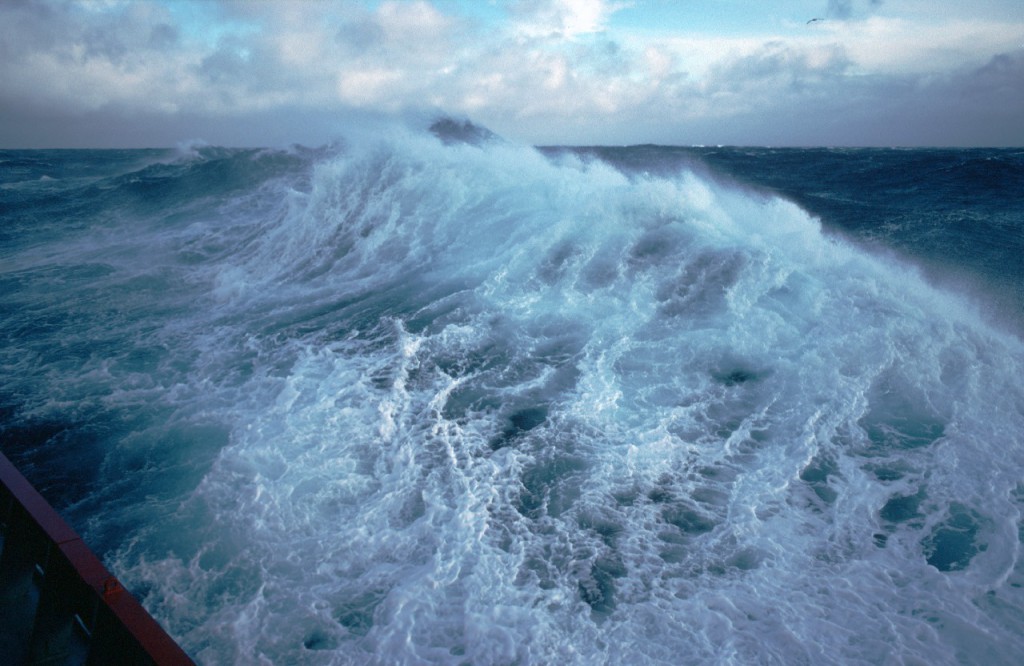A team of scientists has found that atmospheric carbon dioxide (CO2) growth has increased 35 percent faster than expected since 2000. The findings are published this week in the journal Proceedings of the National Academy of Sciences (PNAS).
The study found that inefficiency in the use of fossil fuels increased levels of CO2 by 17 percent, while the other 18 percent came from the decline in the efficiency of natural land and ocean sinks which soak up CO2 from the atmosphere.
The research by the Global Carbon Project, the University of East Anglia (UEA) and the British Antarctic Survey (BAS) shows that improvements in the carbon intensity of the global economy have stalled since 2000 after improving for 30 years, leading to the unexpected growth of atmospheric CO2.
The study also states that global CO2 emissions were up to 9.9 billion tons of carbon in 2006, 35 percent above emissions in 1990 (used as a reference year in the Kyoto Protocol).

Author Dr Corinne Le Qéré of the University of East Anglia and British Antarctic Survey says, “The decline in global sink efficiency suggests that stabilisation of atmospheric CO2 is even more difficult to achieve than previously thought. We found that nearly half of the decline in the efficiency of the ocean CO2 sink is due to the intensification of the winds in the Southern Ocean”.
The study’s lead author, Dr Pep Canadell, executive director of the Global Carbon Project, said: “In addition to the growth of global population and wealth, we now know that significant contributions to the growth of atmospheric CO2 arise from the slow-down of natural sinks and the halt to improvements in the carbon intensity of wealth production.”
Contributions to accelerating atmospheric CO2 growth from economic activity, carbon intensity, and efficiency of natural sinks by Josep Canadell, Corinne Le Qéré, Michael Raupach, Christopher Field, Erik Buitenhuis, Philippe Ciais, Thomas Conway, Nathan Gillett, RA Houghton and Gregg Marland is published on Monday October 22 in the Proceedings of the National Academy of Sciences of the United States of America.
Issued jointly by British Antarctic Survey and UEA.
Athena Dinar, British Antarctic Survey – tel: ++44 1223 221414, mob:07740 822229, email: a.dinar@bas.ac.uk
Linda Capper, British Antarctic Survey – tel: ++44 1223 221448, mob: 07714 233744, email: l.capper@bas.ac.uk
Simon Dunford, UEA – tel ++44 1603 592203, email: s.dunford@uea.ac.uk
Notes to Editors:
Still images and video (DV-cam) of the Southern Ocean is available from the BAS Press Office as above.
Interview opportunities:
Dr Corinne Le Quere – Mobile: ++44 7736 921693, email: c.lequere@bas.ac.uk
Dr Pep Canadell – tel. ++61 407 068930, email: pep.canadell@csiro.au
Professor Nick Owens, Director British Antarctic Survey – contact press office as above.
For further information about the PNAS paper, please visit: http://www.globalcarbonproject.org/activities/AcceleratingAtmosphericCO2.htm
The authors analysed atmospheric CO2 observations and CO2 emissions data since 1959 and compared observed and projected trends.
The Southern Ocean winds have increased in response to greenhouse gases and ozone depletion. The increase in winds has led to a release of natural CO2 stored in the deep ocean, which is preventing further absorption of the greenhouse gas.
The Global Carbon Project is a joint project of the Earth System Science Partnership, CSIRO Marine and Atmospheric Research in Australia.
British Antarctic Survey is a world leader in research into global issues in an Antarctic context. It is the UK’s national operator and is a component of the Natural Environment Research Council. It has an annual budget of around £40 million, runs nine research programmes and operates five research stations, two Royal Research Ships and five aircraft in and around Antarctica.
The University of East Anglia is a world-leader in environmental research and home to the climatic Research Unit, the Tyndall Centre for Climate Change Research, and the Zuckerman Institute for Connective Environmental Research.
